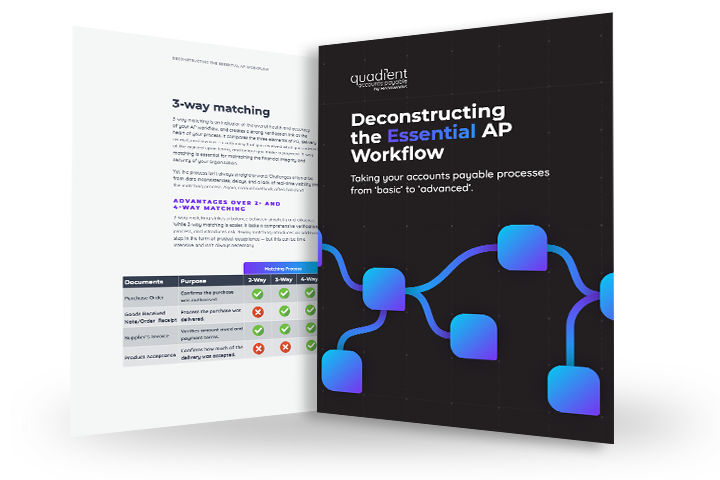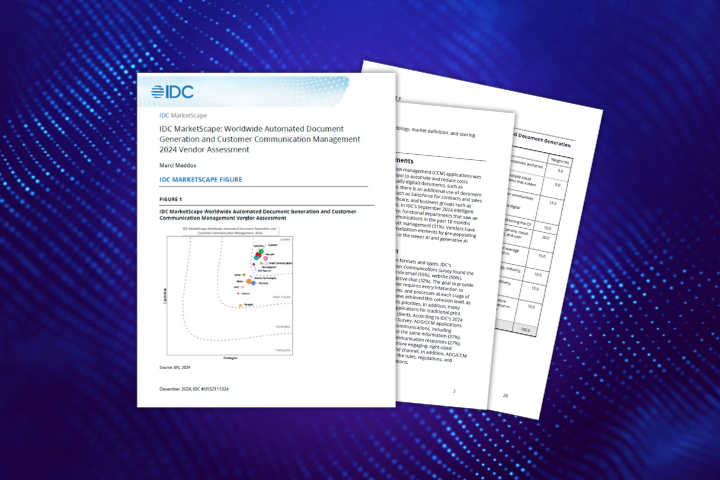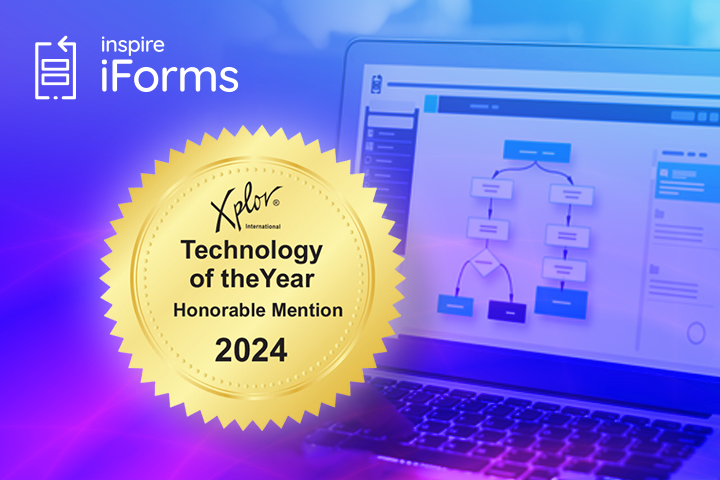
One of the most challenging aspects of the AP workflow is managing the enormous volume of invoices that come across a team’s desk. It’s crucial that every invoice is verified and paid in a timely fashion to keep a company’s finances running smoothly. One of the most reliable ways an AP team can achieve this is to use 3-way matching — a verification process that ensures consistency and accuracy across invoices, purchase orders, and receipts.
Download Now: Master the Accounts Payable Workflow

Download Your Free eBook
What is 3-way matching?

As the name suggests, 3-way matching is a process where three unique elements of an AP purchase workflow are verified against each other, ensuring each invoice is legitimate and accurate.
In a 3-way match, an AP clerk compares:
- The purchase order
- The invoice
- The goods receipt note (GRN).
If the details all correspond correctly, it’s a good indication that the invoice is ready to be paid.
How does 3-way matching compare to other verification methods?
Thanks to its reliability and thoroughness, 3-way matching is becoming the preferred AP verification method. However, there are two alternatives: 2-way matching and 4-way matching.
2-way matching: The information on the invoice is compared with the information on the purchase order. This verification method is faster than 3-way matching since it only involves the comparison of two AP documents, but it can increase the possibility of manual error or fraud since it is less thorough.
4-way matching: A 3-way match is completed and paired with a tolerance limit review. A tolerance limit is the percentage of variation that a company finds acceptable between the purchase order and what is received or billed. While this method can add an extra layer of security, it can also be time intensive.
For example: A company with a 5% tolerance limit orders 50 widgets and receives 54. The four extra widgets are 8% higher than the requested amount which exceeds the tolerance limit — in other words, this indicates the possibility of an error or fraud and should be investigated before the invoice is paid.
The advantages of 3-way matching
When compared with 2-way and 4-way matching, 3-way matching emerges as the most viable option for most AP teams. It’s more thorough and more accurate than 2-way matching, and less time-consuming than 4-way matching. It strikes the perfect balance.
The benefits of 3-way matching include:
- Safeguard workflows: A detailed matching process helps ensure that companies are not overpaying, making duplicate payments, or paying fraudulent invoices.
- Enhance vendor relationships: Regularly verifying that invoices, purchase orders, and goods receipt match can help identify any vendor/supplier relationships that might need adjustment.
- Accelerate invoice processing: 3-way matching leads to a quicker turnaround when it comes to paying invoices. This speed helps vendors see the company as a trusted business partner and opens the possibility of vendor discounts.
- Make audits easier: Ensuring consistency between invoices, purchase orders, and receipts helps companies be better prepared for an audit.
Improve 3-way matching with automation
3-way matching is an effective process when it comes to ensuring accuracy. However, it can be laborious when performed manually, and there’s always the risk of a costly human error. That’s where Quadient AP automation helps.
Quadient AP features AI-powered invoice processing to automate 3-way matching. It quickly and accurately cross-references invoices with purchase orders and receipts, ensuring accuracy and consistency.
Automate your 3-way matching with Quadient AP
Quadient AP provides your AP team with the tools they need to strategically and responsibly manage your workflows. Book a demo with us today to see how Quadient AP can elevate and automate your 3-way matching process.








